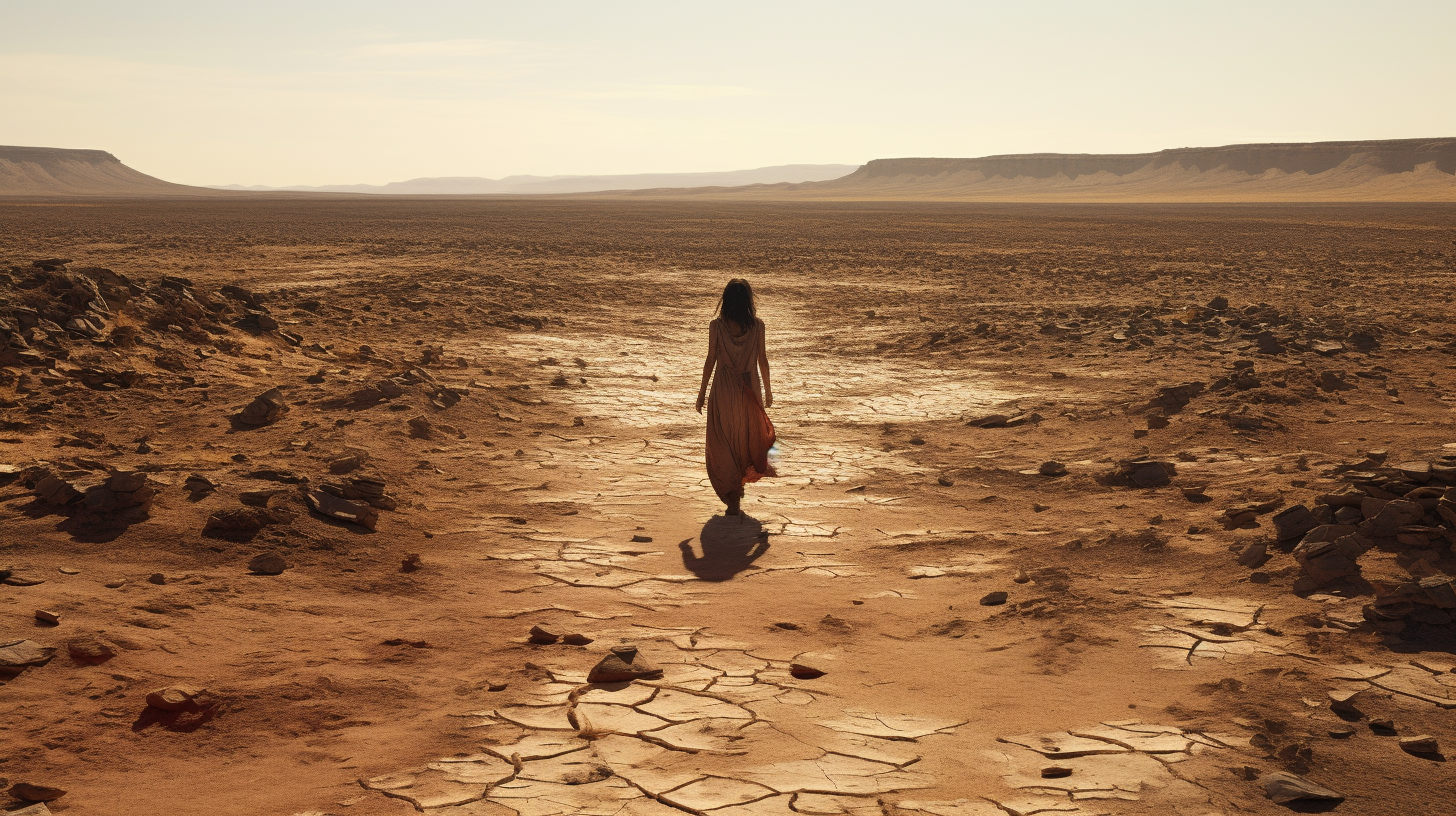The patchwork quilt of green and gold that once adorned the earth is now a faded tapestry, a mere historical relic overshadowed by encroaching sands. Deserts Once Called Home, is not merely a title, but a stark reality for many former inhabitants of what were thriving communities, lush valleys, and bountiful farmlands. Today, we immerse ourselves in a panorama of loss, a tableau turned sepia with barren stretches where children’s laughter used to echo, and life burgeoned.
A reflection on our present, once-vibrant neighborhoods stand as desolate ghost towns, their silenced stories carried away by cruel, indifferent desert winds. The relics of existence—abandoned homes, tools, and toys—are enshrouded by sand, swallowed whole by the very land that once cradled them. It’s a chilling testament to the profound transformation from plenty to empty; fertility flipped into futility.
These were communities that held vibrant local cultures and traditions, societies whose memories now languish beneath layers of dust. Where once gardens flourished and agriculture thrived, demonstrating humankind’s mastery over nature, are now lands held ransom by the atmosphere’s caprice. Farmers, who knew every whisper of the wind and pulse of the soil, now traverse unfamiliar landscapes – their knowledge rendered obsolete in the face of the shifting climate beast.
We venture inside—into the heart of dismay—where kitchens that once smelled of fresh bread and laughter are coated in fine, choking dust. Family photos peek from beneath the grains, their smiles clashing grotesquely against the backdrop of decay. They stand as a stark reminder of the expedited exodus, the human tide forced to abandon hearth and heritage in a desperate bid for survival.
Salvation is sought in the cities, their edges bulging and brimming with refugees of environmental demise. Yet, here too, the sting of abandoned homelands cannot be soothed. In makeshift habitats cobbled from the rubble of decay, tales of verdant pasts seem as if fantasies conjured to soothe the wailing of starved infants.
As we absorb the silence of these former oases, it becomes clear that nostalgia has a hollow ring within walls claimed by the desert. Dreams have withered like the crops that failed too many seasons in succession. The hands that once coaxed life from the soil are now outstretched in plea—a gesture emblematic of the human cost of our environmental neglect.
In the despairing vacuum left behind, wildlife has scampered to the fringes—both of our lands and our conscience. The critters’ vanishing tracks are but a whispered epilogue to this tale of too-late wisdom. Where anthills once teemed, now only the ghosts of ecosystems remain, desiccated remnants of a time when balance reigned.
This mournful spectacle mirrors our actions or, more aptly, our inactions. It echoes the warnings once spelled out clearly across placards and protests—the ignored prophecies of change’s imperatives. This desert, once a home, is now the barren womb of our Earth, a once-fecund mother who laments the squandering of her bounties. The sands are not merely grains but textured epitaphs to a paradise lost, a casualty to the rapaciousness of the age.
In honesty, as dystopian as this narrative reads, it serves as an urgent canvas, urging us to acknowledge the desiccation around us and to reconsider the steps that led us here. But here in our Green Dystopia, the future is authored in the sand—indelible and absolute. We end not with solutions, for the hour is late, but with a mirror, hoping the reflection ignites a glimmer of retrospection before the last dune swallows the final story of what once was home.
